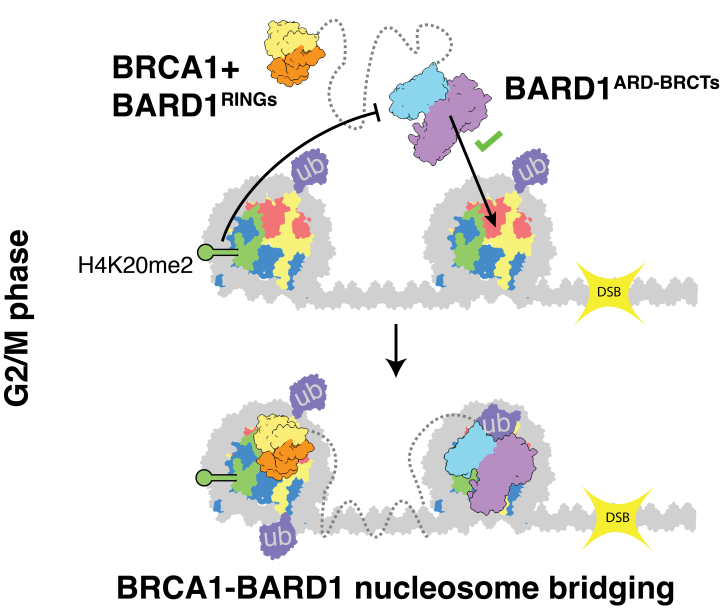BRCA1-BARD1 combines multiple chromatin recognition modules to bridge nascent nucleosomes
Wilson Lab - Nucleic Acids Research
Authors
Burdett, H., Foglizzo, M., Musgrove, L.J., Kumar, D., Clifford, G., Campbell, L.J., Heath, G.R., Zeqiraj, E., and Wilson, M.D.

Paper Summary by Eleanor Casey
Radiation and chemicals in the environment, as well as errors during replication can cause damage to DNA. These damages can result in mutations that lead to diseases like cancer if not quickly repaired by the cell and mutations to repair proteins like BRCA1 increase in individuals chance of developing cancers. Nucleosomes help to organize a cell’s genetic material, and consist of 4 histone proteins that wrap the DNA. In response to DNA damage, histones are modified on specific resides. The Wilson lab and others have shown that damage modified histones are recognized by the BRCA1-BARD1 complex, which then binds to and stimulates repair of broken DNA.
In this paper published in nucleic acids research, Burdett & Foglizzo and colleagues aim to identify how the BRCA1-BARD1 complex is able to recognize modified histones and initiate DNA repair. The authors start by using biochemical assays to show that BRCA1-BARD1 complex specifically recognizes the damage associated H2AKc15ub nucleosome over any other. They next use cryo-electron microscopy to model the interaction between the BRCA1-BARD1 complex and the H2AKc15ub nucleosome. Interestingly their model shows that BRCA1-BARD1 preferentially bridges between two nucleosomes, first binding to a newly deposited nucleosome, and then to an older modified one. The authors then visualise bridging events in real time using atomic force microscopy. These data show that the preferential substrate for BRCA1-BARD1 binding is a pair of unmodified and modified adjacent nucleosomes, the ideal substrate based on when BRCA1-BARD1 stimulates repair.
Related links

